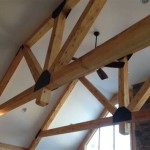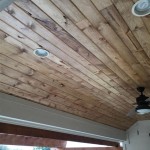Drop Ceiling vs. Suspended Beam Cost: A Comparative Analysis
When it comes to interior design and construction, choosing the right ceiling system can significantly impact aesthetics, functionality, and budget. Two popular options are drop ceilings and suspended beam ceilings. While both systems offer advantages and drawbacks, their costs can vary significantly based on factors such as materials, installation complexity, and the overall project scope. This article delves into a cost comparison between drop ceilings and suspended beam ceilings, providing insights to help you make an informed decision for your project.
Drop Ceiling Costs
Drop ceilings, also known as suspended ceilings, consist of a grid system made of metal or wood, supporting lightweight panels that are suspended from the main ceiling. These panels are typically made of gypsum board, acoustical tiles, or metal.
Cost Breakdown:
*Materials:
The cost of drop ceiling materials varies widely depending on the type of panels, grid system, and accessories. *Panels:
Gypsum board panels are generally the most affordable, while acoustical tiles and metal panels can be more expensive. *Grid System:
Metal grids are typically more cost-effective than wood grids, especially for larger projects. Accessories like light fixtures, vents, and fire sprinklers can also add to the overall cost. *Installation:
Drop ceiling installation involves suspending the grid system from the main ceiling and attaching the panels to the grid. Labor costs can vary depending on the size and complexity of the project. *Design and Customization:
While drop ceilings generally offer a standard aesthetic, you can customize their appearance with various panels, colors, and lighting options, which can affect overall costs.Pros:
*Affordability:
Compared to suspended beam ceilings, drop ceilings are generally more budget-friendly, especially for large areas. *Ease of Installation:
Drop ceiling installation is relatively straightforward and can be completed quickly. *Accessibility:
The suspended panels provide easy access to electrical wiring, HVAC systems, and other utilities located above the ceiling. *Sound Absorption:
Acoustical tile panels can effectively reduce noise levels, making them suitable for spaces with high sound levels, such as offices or auditoriums.Cons:
*Limited Design Flexibility:
Drop ceilings generally offer a more standard appearance, with limited scope for unique architectural elements. *Susceptible to Damage:
The panels can be easily damaged, requiring replacement or repair. *Potential for Dust Accumulation:
The space between the drop ceiling and the main ceiling can accumulate dust, requiring regular cleaning.Suspended Beam Ceiling Costs
Suspended beam ceilings, also known as exposed beam ceilings, feature structural beams made of wood, steel, or concrete that are suspended from the main ceiling. The space between the beams is typically left open, allowing for the installation of lighting fixtures, ductwork, and other utilities.
Cost Breakdown:
*Materials:
The cost of suspended beam ceilings depends heavily on the type of beams used: *Wood Beams:
Reclaimed or manufactured wood beams can vary in cost depending on wood species, size, and finish. *Steel Beams:
These are typically more expensive than wood but offer greater strength and durability. *Concrete Beams:
The most durable option, concrete beams are also the most expensive. *Installation:
Suspended beam installation involves strategically suspending the beams from the main ceiling and securing them for stability. Labor costs can vary depending on the complexity of the installation and the materials used. *Design and Customization:
Suspended beam ceilings offer greater design flexibility, allowing for unique architectural features and custom finishes. This flexibility can increase overall costs.Pros:
*Architectural Appeal:
Suspended beam ceilings create a visually appealing and unique aesthetic, adding architectural interest to the space. *Open Design:
The open design allows for clear visibility of the beams, utilities, and lighting fixtures, creating a modern and industrial look. *Increased Space:
The open design can make the space feel larger and more expansive.Cons:
*High Cost:
Suspended beam ceilings are generally more expensive than drop ceilings due to the cost of materials and installation. *Less Access:
Unlike drop ceilings, suspended beam ceilings can impede access to utilities and components located above the ceiling. *Less Acoustical Control:
The open design of suspended beam ceilings can lead to higher noise levels, requiring additional acoustic treatment for noise reduction.Conclusion
The choice between drop ceilings and suspended beam ceilings ultimately comes down to your budget, design preferences, and functional requirements. Drop ceilings offer affordability and ease of installation, while suspended beam ceilings provide a unique aesthetic and open design. A thorough evaluation of your project's specific needs and constraints will help you determine the most cost-effective and suitable ceiling system for your space.

How Much Cash Will You Drop On A Ceiling Homeserve Usa

This Vs That Exposed Ceiling Or Acoustical Dbs Group Llc

Drop Ceiling Or Drywall Which One Should You Choose

Ceilings 101 Drop Ceiling Vs Drywall Elegant Walls

How Much Does A Drop Ceiling Cost 2024 Data Angi

Drop Ceiling Vs Bare

Pros And Cons Of Having A Drop Ceiling With Commercial Tiles In The Office Decorative Inc

Pin On Liams Room

What Are The Types Of Suspended Acoustic Ceilings 9wood

Basement Ceilings Drywall Or A Drop Ceiling Fine Homebuilding
Related Posts








